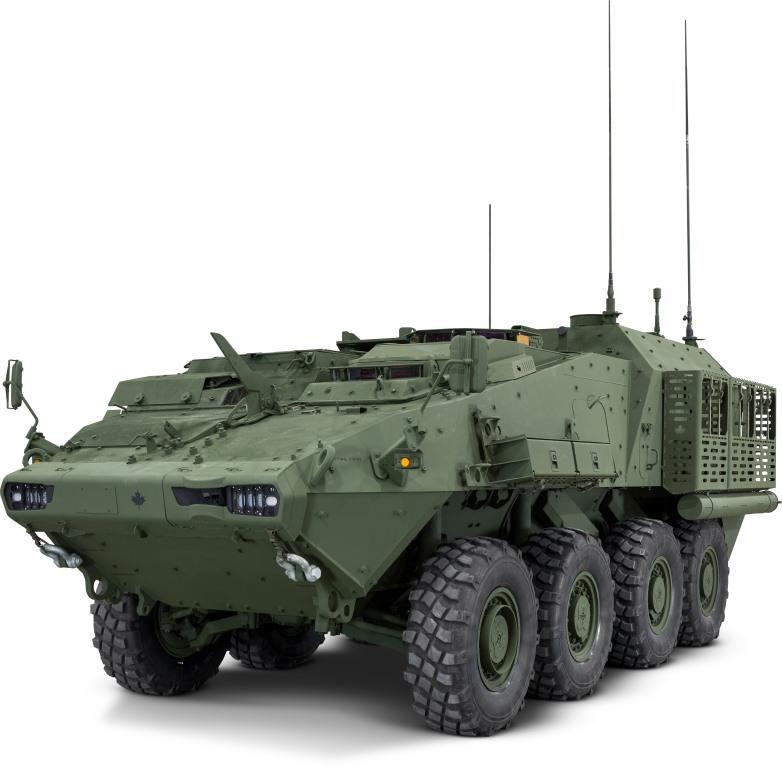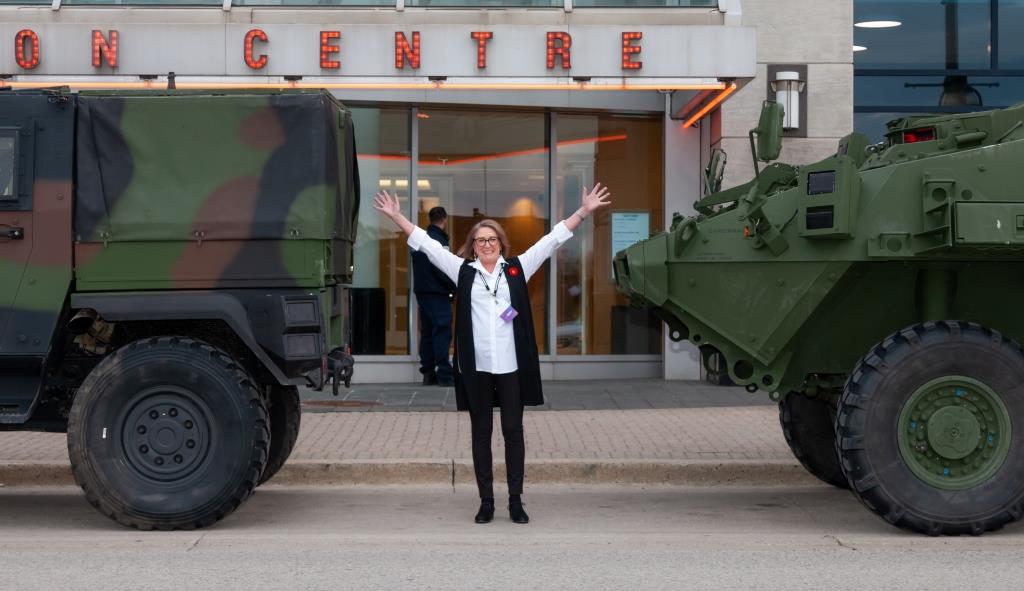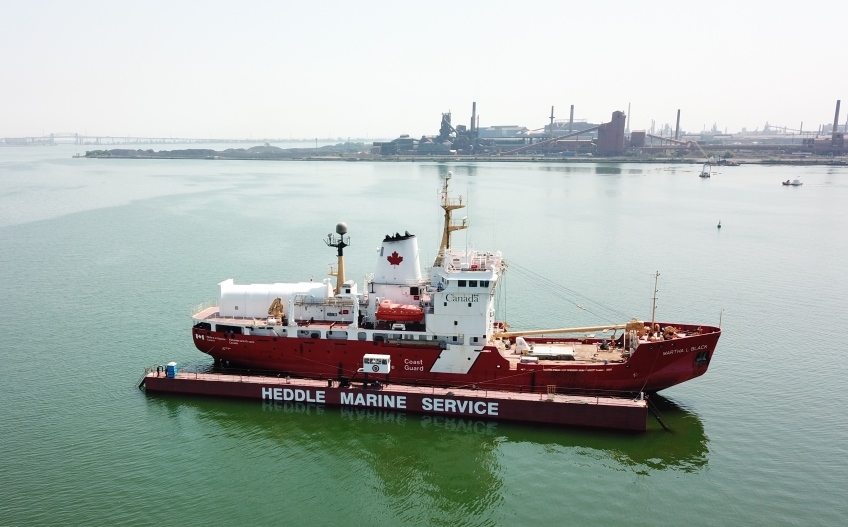REGIONAL REPORT
BY PETER DIEKMEYER
ONTARIO
Government lockdowns have thrown the Canadian economy into a precarious position and investments in defence infrastructure could provide a path back to prosperity
 The past six months have been particularly difficult for Canadians, battling what Prime Minister Trudeau describes as an “insidious” common enemy. Prioritization of the continued threats posed by the global pandemic during Trudeau’s September throne Speech, provided clarity and focus. It also delivered an obvious message: to the Armed Forces and defence sector personnel who have been on the front lines: this battle is nowhere near finished.
The past six months have been particularly difficult for Canadians, battling what Prime Minister Trudeau describes as an “insidious” common enemy. Prioritization of the continued threats posed by the global pandemic during Trudeau’s September throne Speech, provided clarity and focus. It also delivered an obvious message: to the Armed Forces and defence sector personnel who have been on the front lines: this battle is nowhere near finished.
Cynics would say that the minority Liberal government’s focus on COVID-19 and its plans to spend massively to develop a “green economy” to support job creation amidst the pandemic, is unrealistic.
Yet according to Ben Cecil, president of Defence Ontario, contentious Ottawa politics are in many ways “par for the course.” Indeed Ontario defence stakeholders have been navigating the period surprisingly well. “We have continued to liaise with members throughout the process by means of regular contacts, surveys and ITB (Industrial and Technical Benefits) information webinars,” says Cecil. “Many have been supporting Canada’s response to the pandemic by donating personal protective equipment and supplies to frontline workers. Government also seems to be doing its best to create jobs and sustain existing ones by sending work to local defence contractors.”
GDLS – CANADA KEEPS BUSY
The performance of the defence sector in Ontario, which is home to the nation’s capital, its largest financial center and dominant population, provides a window into the state of defence contractors throughout the country. Regional advocates boast that the province hosts world class capabilities in sectors including aerospace, space, naval, combat vehicles, munitions/weapons, soldier systems and C4ISR, as well as prime military bases and other soldier deployment facilities.
According to the Ontario Government, the province’s defence industry generates approximately $3.5 billion in annual sales and accounts for more than 10,000 jobs. Ottawa is home to the national offices of Canadian Association of Defence and Security Industries and the Conference of Defence Associations Institute as well as 11 of the country’s top 25 sector businesses ranging from Lockheed Martin Canada, to L3Harris WESCAM and General Dynamics Mission Systems Canada.
Yet, while the word “defence” wasn’t mentioned a single time in the Trudeau’s throne speech, perhaps it should have been. Government lockdowns have left the economy in a precarious state. Unemployment remains high, the Canadian public is divided, and morale is down. Vulnerable demographics remain in self-quarantine with eyes glued in terror on video screens at the ever-changing daily pronouncements of medical experts. Younger Canadians and small business owners for their part remain barred from going normally about their work. Those that can function in public must wear masks, an obligation which provides consumers with the constant reminder that not all is well.
Academics would say that the situation appears ideal for “Keynesian” economic stimulus. If that happens, investments in Ontario’s defence sector in companies such as General Dynamics Land Systems, which employs 1,700 people centered around its London light armored vehicle facility, would appear to be a great place to start. “Canada has a unique opportunity to leverage procurement dollars to benefit the economy,” said John Ellison, the company’s Vice-President and General Manager. “As a major OEM we know that each contract dollar invested domestically drives an estimated two dollars in economic output.”
GDLS has also kept busy throughout the crisis on mandates such as the Light Armoured Vehicle Reconnaissance Surveillance System (LRSS) contract for the Canadian Armed Forces, which will see the replacement of a fleet of aging Coyotes with 66 state-of-the-art surveillance systems, integrated into a LAV 6.0 chassis. According to Ellison, key critical testing in the program is now complete and a move into the production phases is imminent. GDLS is also slated to deliver the first of 360 vehicles in its Armoured Combat Support Vehicle (ACSV) contract later this year.
COLLINS AEROSPACE CALLS FOR
NATIONAL AEROSPACE STRATEGY
Lee Obst, managing director at mission systems, tactical communications and avionics solutions provider, Collins Aerospace, agrees that aerospace and defence investments could provide good value in the current environment. “A crisis is a good time to invest in the future,” says Obst, who also helped the company navigate the 2008 economic collapse. “That means beefing up environmentally friendly processes, streamlining operations and thinking about new technologies such as big data and AI.”
Obst and the folk at Collins Aerospace, who are used to handling change, have a heavy load on their plates. The company’s U.S. parent’s (United Technologies’) “merger of equals,” with Raytheon Technologies, will create one of the world’s largest aerospace and defense companies. The combined operation, which was expected to generate approximately $74 billion in pro forma 2019 net sales and employ a global team of 195,000 people, including 60,000 engineers and scientist, will make a range of new defence solutions available. While much of the action is slated to take place at the corporate level, Obst is taking a lead role in helping coordinate capabilities of the various Canadian divisions.
“Now would be a good time to adopt a national aerospace strategy,” says Obst. “Japan and several European countries have already moved ahead with such initiatives, which promote domestic innovation and create high, value added jobs.” This initiative could include research and technology to develop components for what Obst calls “the C4ISR battlespace of the future.” The industry veteran is also keeping his eye on other longer-term projects, in which Collins Aerospace could add value. These range from a proposed modernization of Canadian NORAD infrastructure, as well as the Cormorant Mid-Life Upgrade, Future Fighter and Future Air Crew Training programs.
IMT DEFENCE LOOKS SOUTH OF THE BORDER
IMT Defence, which produces a broad range of ammunition for the Canadian Armed Forces provides an excellent window into the benefits that accrue to Ontario defence sector manufacturers that adopt a diversified strategy. These have become particularly apparent during the COVID-19 era. “We offer services to a wide range of sectors says Remo Assini, the company’s president. “While our civilian business has been affected by the recent economic weakness, our defence work has been steady. We saw the same thing in 2008.”
Employment at IMT Defence’s Canadian ammunition production facilities in Ingersol (where machining work is concentrated) and Port Colburn (where forgings and later stage manufacturing takes place) has remained steady at about 150-200 people, who produce mostly Howitzer and grenade launched shells. These include a 40 mm high velocity version that is deployed with the Canada’s Tactical Armored Patrol Vehicles which are gradually entering regular service. “At the beginning of the pandemic there was a lot of confusion related to the best ways to keep up production,” says Assini. “The hardest part was keeping our people safe so that they would feel comfortable coming back to work.”
Yet while shipments remain steady, one of Assini’s major challenges is figuring out whether the shells the company is producing are being used, or whether they are just piling up in Canadian Armed Forces base  warehouses. This is harder than it appears, due to the inherent opaqueness of military training schedules. However, thins information is important to Assini, because a major client that is overloaded with product could slow their purchases at some point and cause production disruptions down the line.
warehouses. This is harder than it appears, due to the inherent opaqueness of military training schedules. However, thins information is important to Assini, because a major client that is overloaded with product could slow their purchases at some point and cause production disruptions down the line.
As such, IMT Defence has been seeking out new orders elsewhere. The company is bidding to conduct research and development related to possible processes and components to be used in the production of larger caliber artillery rounds for the U.S. Department of Defence. These wins could set the stage for broader deals down the line. Existing assignments with the U.S. Army and a U.S. based original equipment manufacturer, have yielded positive results. “The main challenge is ramping up,” says Assini. “That means undergoing a thorough first article testing/qualification process, which we have had to adapt to, as travel remains problematic.”
HEDDLE SHIPYARDS TARGETS POLAR ICEBREAKER
The National Shipbuilding Strategy is one example of a major defence infrastructure recapitalization initiative that the Canadian Government can leverage to spur growth during the coming years. However, politicians need to play their cards right says one expert. “Ship construction takes a long time to get approved, designed and scheduled,” says Ted Kirkpatrick, director of business development and government relations at Heddle Shipyards. “That means we need to act fast to avoid disruptions in existing naval supply chains that could lead to job losses.”
Heddle Shipyards, which operates several facilities on the Great Lakes, recently partnered with Seaspan Shipyards to submit a proposal to build a long requested Polar Icebreaker for the Canadian Coast Guard. Under the teaming arrangement Heddle would produce a variety of internal parts and components. These would be shipped over to a Seaspan yard on the west coast and plugged “like Lego blocks” into the construction.
This would be a natural fit for Heddle Shipyards, which is already producing parts for a Joint Support Ship that Seaspan Shipyards is building. “A Polar Icebreaker would support thousands of Canadian jobs over the multi-year life of the program. The strategic relationship would provide work for our three Ontario shipyards in Hamilton, St. Catharines, and Thunder Bay as well as for our facilities in Mount Pearl, Newfoundland,” says Kirkpatrick. However, Kirkpatrick warns that if governments play their cards wrong, they could end up doing more harm than good. “We need to keep up the pace, otherwise we could start to see gaps in our production schedule. Heddle Shipyards has been building ships for the Royal Canadian Navy as far back as WWI. We have a highly-skilled workforce at all of our shipyards, well-established supply chains and we want to pitch in.”
NP AEROSPACE LEADS DIVERSITY IN DEFENCE
Canada’s aerospace and defence industry has long prioritized efforts to increase diversity. The same can be said about Ontario, which is home to the head office of Women in Defence and Security (WiDS), which has taken the lead. Jessica Bland, who was recently named as head of a 10,000 square foot newly opened NP Aerospace facility in London Ontario, is one of many organization members, who have benefitted from its efforts to help the industry recognize excellence, develop talent and create connections.
NP Aerospace, which makes CM735 ballistic helmets, shields and personal armor plates for the Canadian Army broke new ground itself on the diversity front when it was acquired from a large multinational by the Pasqua First Nation, with money earned from a multi-million dollar land settlement. So far, the deal is generating great results. Profits and revenues at the company are up, and employment has increased to 145 worldwide, from 100 last year.
According to James Kempston, NP Aerospace’s CEO, the company’s affiliation with Pasqua First Nation could prove to be a major plus during the coming years, as the Canadian government is promoting offsets arising from defence procurements that produce tangible benefits for aboriginal communities. Establishment of the company’s London plant, which is located near established clients such as General Dynamics Land Systems in the Ontario corridor, was done in part to help leverage that process. During coming months NP Aerospace will use funds from a CanExport grant to develop the U.S. market. Longer-term its strategy is to be a North American center of excellence.
SMEs ADJUSTING TO PANDEMIC
One of the biggest questions related to the Canadian Government’s COVID-19 related lockdowns will be the long-term effects that business closures, forced confinement and extended periods of compulsory mask wearing will have on the population. Small and medium sized businesses, which generally don’t have the large bank accounts and backing of large corporate structures are a particular source of concern. Cancellation of events such as the Best Defence Conference and trade show, where priceless networking and groundwork that is often needed to advance sector projects is often conducted is a particular source of concern. “We are an industry built on relationships,” says Heather Pilot, president of Pilot Hill and chief organizer of the two day event. “We are used to shaking hands and cozy chats.”
Pilot, whose platform at Best Defence provides her with a finger on the pulse of key sector developments, says that the crisis comes at a particularly tough time for the industry. “COVID-19 is tough because businesses sense that there is no control of the external environment,” says Pilot. “On one hand they need to work with new Canadian export controls related to countries such as Saudi Arabia, yet at the same time shipping costs are rising and the United States is in the middle of a contentious election. Rising trade protectionism and “Buy American” policies are also a concern.”
Local industry players were hoping to get in at least one conference before the end of the year, to generate momentum for 2021 and Best Defence, which typically takes place late in the year was the last hope. “We were getting calls from people in Denmark and the UK who wanted to come,” says Pilot with a tad of melancholy. “We waited until the last minute. But there was no way we could hold the event safely. So, in August we sent an email out telling everyone about the bad news.”
Despite the challenges, Pilot cites several Ontario defence companies that have managed to contribute beyond the call ranging from DEW Engineering, to Fellfab, Tulmar Safety Systems and Abuma Manufacturing. “Everyone is hurting,” says Pilot. “Companies that have existing contracts are naturally doing a bit better. But many small and medium sized enterprises have had to make major adjustments.” Best Defence for its part will try to keep the momentum going by holding a mini-outlook on November 17th 2020, which will encapsulate the information contained in CADSI’s multi-day army, navy, and air force outlooks into three - 30 minute sessions that will be open to anyone. Pilot assures defence sector stakeholders that the conference itself will be back next year in London on November 16th and 17th.


